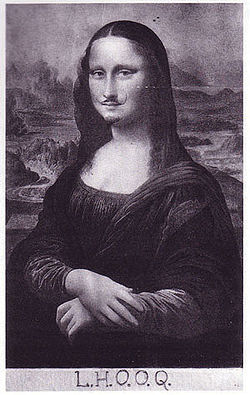Due to an unsettling meeting I had today, it has become apparent that many do not know, nor do they properly understand, the use of copyright when it comes to artwork or artistic creations. I’ve pulled out a few examples from my undergraduate days and a very recent one I have experienced myself. Because this topic is so large, it will be covered in three parts and covered over a three day period. I am writing for my fellow artists, I am writing for my fellow students, and I am writing for those who simply do not know better. Come in, take a seat, and hold on.
What’s the difference between Appropriation, Derivative works and plagiarism?
First, we need to look at the definition of all three. Not all works will fit into these categories and some will walk the lines between all three, but for now here are the definitions.
Derivative works: A derivative work pertaining to copyright law, is an expressive creation that includes major, copyright-protected elements of an original, previously created first work.
Appropriation: In the visual arts, to appropriate means to adopt, borrow, recycle or sample aspects (or the entire form) of man-made visual culture. The term appropriation refers to the use of borrowed elements in the creation of a new work (as in ‘the artist uses appropriation’) or refers to the new work itself (as in ‘this is a piece of appropriation art’).
Plagiarism: as defined in the 1995 Random House Compact Unabridged Dictionary, is the “use or close imitation of the language and thoughts of another author and the representation of them as one’s own original work.”Acts that may constitute plagiarism are in some instances treated as copyright infringement, unfair competition, or a violation of the doctrine of moral rights. The increased availability of intellectual property due to a rise in technology has furthered the debate as to whether copyright offences are criminal.
These three definitions a re very different, but also carry similarity. Even though this is evident, it is easy to see that Derivative works and instances of appropriation are protected under law and should not be misconstrued as blatant acts of plagiarism. One of the most famous cases of derivative works comes from Marcel Duchamp’s L.H.O.O.Q. (pictured left). It’s obvious that the first thing someone would say is ” Hey! That’s Leonardo da Vinci’s Mona Lisa with a mustache! He can’t do that!”
re very different, but also carry similarity. Even though this is evident, it is easy to see that Derivative works and instances of appropriation are protected under law and should not be misconstrued as blatant acts of plagiarism. One of the most famous cases of derivative works comes from Marcel Duchamp’s L.H.O.O.Q. (pictured left). It’s obvious that the first thing someone would say is ” Hey! That’s Leonardo da Vinci’s Mona Lisa with a mustache! He can’t do that!”
But yes, yes indeed Duchamp could and did do such things. Duchamp added three things to this painting that fully transformed it. He added a mustache, he added a goatee and he added the caption L.H.O.O.Q. It doesn’t seem like much, but these three things re-contextualized his piece from the original. Duchamp was commenting on the French upper class’s sense of entitlement in everything from their attitudes to their personal appearance. In the eyes of the law this is a completely different work of art that is not to be confused with the very famous original.
Side Note: Did you know that most films based upon novels are classified as derivative works?
Update: Added in a few more outgoing links to other Wikipedia pages with information.
You worked so hard on your flash project, Kat! I’m so proud of you, especially after you figured out how to fix it when you thought you’d messed up. I still have those cup cakes I offered you last night if you need some love! You do great work!
I liked it. So much useful material. I read with great interest
thank for the great info.
At the risk of sounding annoying (it is good info, and I appreciate you sharing it) where is the wikipedia citation? Since you’re talking about plagiarism and all…. 😛
Which one? They’re all up there in the definitions.
see it at the bottom…just giving you a hard time.
Your blog keeps getting better and better! Your older articles are not as good as newer ones you have a lot more creativity and originality now keep it up!
Just killing some in between class time on Digg and I found your entry. Not normally what I prefer to read about, but it was certainly worth my time. Thanks.